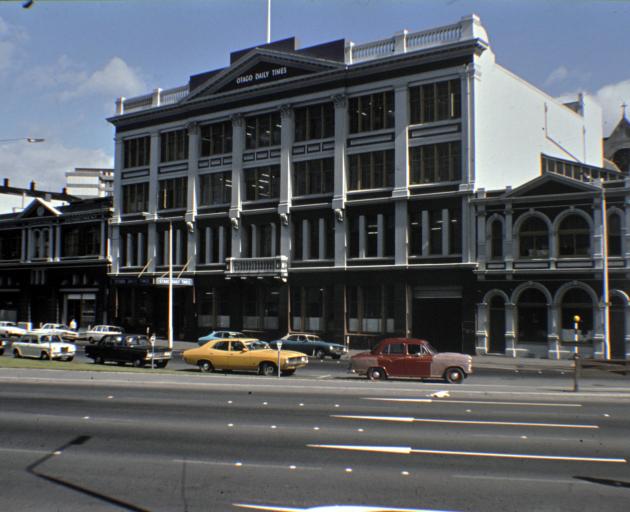
But a picture taken by our very talented photographer Gerard O'Brien got me thinking about that narrow definition.

Go and check out the fence if you are in Dunedin. But watch the traffic!
The fence is a classic of its kind. I'll stop short of saying ''iconic'', because the excessive use of that term irritates me intensely.
Can you think of other quirky pieces of heritage around the region that may have escaped many people's attention?
Acts of kindness
I'm pleased that one reader at least has been the recipient of a small act of kindness in recent times.
Kevin Flaherty, of Belleknowes, reports the following:
''Attended the splendid doco Celia as part of the film festival last night.
''Returned to the lower Moray Pl car park at 8.10pm, cold and hungry. Queue at the pay machine. Got to the front 8.17pm, slid my $20 note in and out it came again.

''Then I heard a voice behind me, Scottish accent I think, offer me the $4. I refused, she and her friend insisted - it was a 'pay forward', they said.
''I took the money, with thanks, and paid and went to my car where my wife was waiting.
''She gave me the $4, which I then took to their car, but it was refused with a smile, and again the words a 'pay forward - my turn now'. They also mentioned the spirit of Celia Lashlie.
''Thank you ladies for your kindness last night.''
Oxymoronic fun
Jane Edwards found this example in a headline on page 20 of Tuesday's ODT: ''Crash victim received negligent care''.
''Hmmm, 'negligent care' looks like an oxymoron to me,'' she says.
Indeed.
What is Central Otago?
Had an interesting discussion with some of my newsroom colleagues this morning as to what/where Central Otago actually is.
Am I talking about the area covered by the district council - in which case, Queenstown and Wanaka are beyond its boundaries - or is it more the broader territory encompassed within the ''idea'' of Central, its schist tors, burnt ochres and its shimmering summer heat and shivering winter cold?
Liz Palmer, of Portobello, believes Central is obviously not on the right path ''if people think the ever-growing problems in the area are going to be fixed with an additional airport in the region''.
''Big-picture tourism, worldwide, has become a problem. Locals are displaced from being able to rent in or near the inner cities where they have lived for years. Tourists are passing through a place so quickly the average spend figures are dismal, and the carbon footprint of short-term, long-haul flights is outrageous.
''On top of that, it is not necessarily a wonderful experience any more. This 'been there, done that' type of superficial travel should be actively discouraged.
''At a recent public talk at Otago University, Prof James Higham had some interesting things to say on the subject of air travel and climate change.
''The air-travel industry appears to sit in a parallel universe as far as the urgent need to actively reduce the use of fossil fuels. For the first time in history we recently had more than 200,000 planes in the air in a 24-hour period, and the technology for increasing the efficiency of jet engines has reached its peak.
''These are disturbing facts, and with this knowledge in hand the idea of increasing the infrastructure for air travel for short-term, low-spend, high-carbon footprint travel does not make sense.
''The region and central government should be looking at ways to slow the stay period of visitors down. Business-wise, we are after the tourist dollars, not the volume of tourists.
''Infrastructure that allows the tourist to travel safely through our country (I'm visualising train travel here) and take the time to see, experience and taste our wonderful country should be encouraged or made mandatory. How about a minimum two-week stay unless an exemption is obtained?! Start a slow-travel movement.''
Interesting idea, thanks Liz.
The 1957 snow
Trevor Weir, of Geraldine, called to say he was a boarder at Otago Boys' High School's Campbell House at the time.
''It was up Stuart St where the tennis courts are now. I was there from '55 to '59.
''I remember waking up to the snow and sledging right down Stuart St to where London St joins it.
''We had limited resources of course, but we had all sorts of stuff we were sliding down the hill. It was great fun, until they spoiled it by bringing out the snow ploughs so the cars could get through.''
John Burton also rang. He was a dental student at the University of Otago and recalled Colin Durning, later professor of dentistry, arriving on skis.
A very good way of getting around! If you know how to stop.
